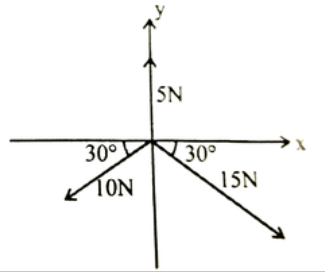An ideal gas has an initial pressure of 3 pressure units and an initial volume of 4 volume units. The table gives the final pressure and volume of the gas (in those same units) in four processes. Whish process starts and ends on the same isotherm
ltimg src="https://d10lpgp6xz60nq.cloudfront.net/physics_images/ALN_PHY_R04_E09_009_Q01.png" width="80%"gt
A
B
C
D
The correct Answer is:C
Step by step video & image solution for An ideal gas has an initial pressure of 3 pressure units and an initial volume of 4 volume units. The table gives the final pressure and volume of the gas (in those same units) in four processes. Whish process starts and ends on the same isotherm ltimg src="https://d10lpgp6xz60nq.cloudfront.net/physics_images/ALN_PHY_R04_E09_009_Q01.png" width="80%"gt by Physics experts to help you in doubts & scoring excellent marks in Class 12 exams.
Updated on:21/07/2023Topper's Solved these Questions
- RACEBOOK - ALLENCHAPTER - RACEEXERCISE - Basic Maths (Thermal Physics) (Thermodynamic process)
21 Videos
- RACEBOOK - ALLENCHAPTER - RACEEXERCISE - Basic Maths (Dscillations) (Kinematics of SHM)
20 Videos
- RACEBOOK - ALLENCHAPTER - RACEEXERCISE - Basic Maths (Thermal Physics) (Mode of Heat Transfer)
12 Videos
- NEWTONS LAWS OF MOTIONBOOK - ALLENCHAPTER - NEWTONS LAWS OF MOTIONEXERCISE - EXERCISE-III
28 Videos
- SIMPLE HARMONIC MOTIONBOOK - ALLENCHAPTER - SIMPLE HARMONIC MOTIONEXERCISE - Example
1 Videos
Similar Questions
An ideal gas has initial pressure of 3 presssure units and an initial volume units the table gives the final pressure and volume of the gas ( in those same units ) in five processes which processes start and end on the same isotherm ?

View SolutionMatch the following Column A to Column B

View SolutionMatch the following Column A to Column B

View SolutionAt x=0, value of dydx is :

View SolutionAt point P, the value of dydx is :

View SolutionThe equation of straight line shown in figure is :

View SolutionFor shown situation find ∠BCA :-

View SolutionMatch the following lists:

View SolutionFind the magnitude of the resultant of shown forces :-

View SolutionWhat is the distance OA for the square shown in figure :-

View Solution
